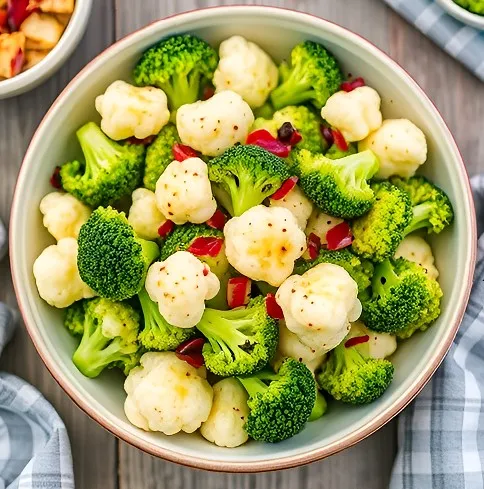Let’s be honest, sometimes the word “salad” can evoke a sigh rather than a cheer, right? But what if I told you there’s a salad out there that could actually make you excited to eat your veggies? Prepare to be converted, because Broccoli and Cauliflower Salad is about to redefine your salad expectations! Forget those watery, wilted greens – we’re talking about a vibrant, crunchy dance of textures and flavors, a true match made in veggie heaven! Imagine crisp broccoli florets mingling with tender cauliflower, all tossed in a creamy, tangy dressing that’s utterly irresistible. Are you ready to discover why this isn’t just another salad, but a go-to dish for potlucks, family dinners, and healthy meal prep? In this article, we’ll explore everything from the incredible health benefits to foolproof preparation tips and delicious variations… Let’s dive in and unlock the secrets to salad satisfaction!
Table of Contents
The Benefits of Broccoli and Cauliflower Salad
Nutritional Powerhouses
Broccoli and cauliflower are often hailed as superfoods – and for good reason. Both belong to the cruciferous vegetable family, rich in essential nutrients. Broccoli, for example, is packed with vitamins C and K, which support a strong immune system and healthy bones. Meanwhile, cauliflower is a great source of fiber, aiding digestion and keeping you full longer.
What makes these veggies stand out is their high antioxidant content. Broccoli contains sulforaphane, known for its anti-inflammatory and cancer-fighting properties, while cauliflower is loaded with glucosinolates, compounds that detoxify the body and promote overall health. By combining the two, you’re creating a nutrient-dense salad that’s as wholesome as it is delicious.
Health Benefits of Daily Consumption
Eating broccoli and cauliflower daily can have transformative effects on your health. These vegetables are low in calories but high in fiber, making them ideal for weight management. Plus, they’re known to improve digestion and reduce inflammation, thanks to their phytonutrient content.
Another incredible benefit is their role in boosting heart health. Both broccoli and cauliflower contain compounds that lower bad cholesterol levels and improve blood circulation. Additionally, the vitamin C and antioxidants they provide can enhance your skin’s glow and fight the effects of aging.
That said, moderation is key. While these veggies are incredibly healthy, consuming large amounts every day might cause minor issues like bloating for some people due to their fiber and sulfur content. Pairing them with other food groups ensures a balanced diet while still reaping all their amazing benefits.
Is It OK to Eat Broccoli and Cauliflower Every Day?
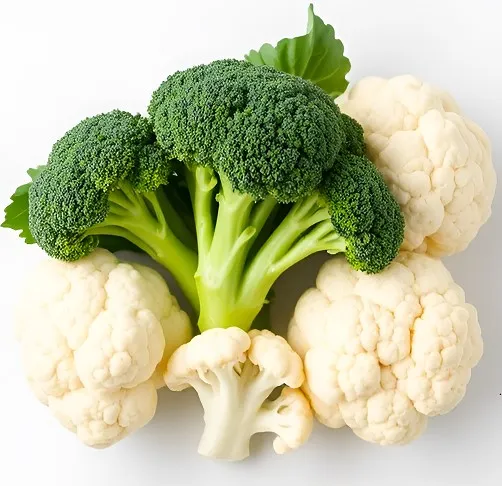
Daily Nutrition: What Experts Say
Eating broccoli and cauliflower every day is not only safe but can also be incredibly beneficial for your health. These vegetables are low in calories, packed with fiber, and loaded with essential vitamins like C, K, and folate. Experts often recommend incorporating cruciferous vegetables into your diet regularly, as they can lower the risk of chronic illnesses, including heart disease and certain cancers.
The beauty of broccoli and cauliflower is their versatility. You can enjoy them raw in salads, roasted with your favorite spices, or even blended into smoothies. However, it’s important to pay attention to portion sizes. Eating a cup or two daily is generally well-tolerated and provides you with a significant nutritional boost.
Potential Downsides to Consider
While broccoli and cauliflower are undeniably healthy, consuming them in excess could cause minor digestive discomfort for some people. These vegetables are high in fiber and contain sulfur compounds, which can lead to bloating and gas if eaten in large amounts, especially if your body isn’t accustomed to a high-fiber diet.
Another consideration is their goitrogen content, which may interfere with thyroid function if consumed in excessive amounts by individuals with thyroid issues. However, cooking them can reduce these compounds significantly, making them easier to digest and more thyroid-friendly.
Pro Tip: Balance is key! Pair broccoli and cauliflower with other veggies, grains, and proteins to enjoy their benefits while maintaining a well-rounded diet. If you notice any discomfort, try reducing portion sizes or cooking them lightly to make them gentler on your digestive system.
By including broccoli and cauliflower in your meals in moderation, you’ll enjoy their health-boosting properties without any of the drawbacks.
Preparing Broccoli and Cauliflower for Salad
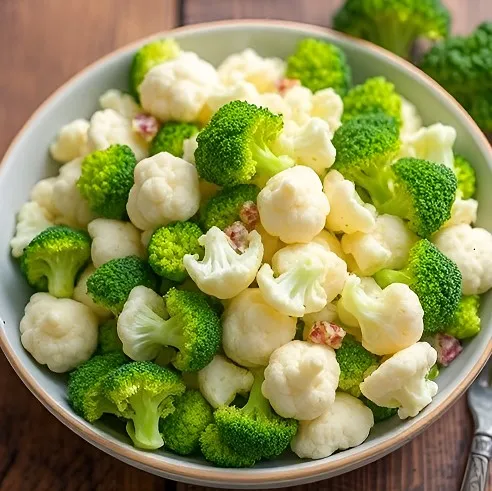
Steaming vs. Raw: Which Is Better?
When it comes to preparing broccoli and cauliflower for a salad, you might wonder: should they be served raw, or is steaming the better option? Both methods have their pros and cons, depending on your taste preference and nutritional goals.
Raw broccoli and cauliflower are crisp, fresh, and full of crunch – perfect for salads that need a hearty texture. Additionally, consuming them raw preserves their full nutrient profile, especially heat-sensitive vitamins like vitamin C. However, some people may find raw florets a bit too tough or hard to digest.
Steaming, on the other hand, softens the vegetables just enough to make them tender while still retaining a good amount of nutrients. Light steaming can also enhance the natural sweetness of broccoli and cauliflower, making them more palatable. Plus, steaming reduces the goitrogens in these vegetables, which is a bonus for individuals with thyroid concerns.
Ultimately, the choice between raw and steamed comes down to your personal preference. For a balanced approach, try blanching the florets – a quick boil followed by an ice bath – to achieve the best of both worlds: tender texture with vibrant crunch and preserved nutrients.
Does Cauliflower and Broccoli Steam at the Same Time?
If you’ve ever steamed vegetables, you’ve probably noticed that timing matters. Fortunately, broccoli and cauliflower can steam together, but there’s a small trick to ensure they’re cooked evenly.
Broccoli florets are generally softer than cauliflower, so they cook a bit faster. To avoid overcooking, make sure you cut the cauliflower florets into slightly smaller pieces than the broccoli. This way, both vegetables will steam evenly in about 5–7 minutes.
For the best results:
- Add an even layer of broccoli and cauliflower florets to your steamer.
- Steam for 5 minutes, then check the tenderness. They should be fork-tender but still slightly crisp.
- Remove immediately to prevent overcooking.
Pro Tip: Add a pinch of salt or a squeeze of lemon to your steaming water for an extra layer of flavor!
Whether you choose raw or steamed, properly preparing broccoli and cauliflower is key to creating a salad that’s both delicious and nutritious.
Why Does My Broccoli Salad Get Watery?
Causes of Excess Water in Salads
There’s nothing worse than preparing a beautiful broccoli and cauliflower salad, only to find it swimming in excess water by the time you’re ready to serve. But why does this happen? The culprit lies in the natural water content of the vegetables and how they interact with dressings.
Broccoli and cauliflower are both high in water, which they release over time, especially when cut into smaller pieces. When you mix these vegetables with salt or acidic ingredients like vinegar or lemon juice, it draws out even more moisture through osmosis. This can lead to a watery salad, diluting the flavor and making the texture less appealing.
Another factor is improperly dried vegetables. If you rinse your broccoli and cauliflower before preparing your salad but don’t dry them thoroughly, the excess water clings to the florets and adds to the problem. Similarly, storing the salad in an airtight container for an extended period can trap moisture, causing it to pool at the bottom.
Pro Tips to Keep Salads Crisp
To avoid watery broccoli salads, follow these simple tricks:
- Dry Thoroughly After Washing: Use a salad spinner or pat the florets dry with a clean kitchen towel after rinsing them. Removing surface moisture is essential.
- Pre-Salt the Vegetables: Toss your broccoli and cauliflower with a small amount of salt and let them sit for 10–15 minutes. Then, gently pat them dry to remove the water that’s been drawn out.
- Add Dressing Just Before Serving: To prevent the salad from getting soggy, store the vegetables and dressing separately if you’re not serving the salad right away. Toss them together just before serving to keep everything fresh.
- Use Absorbent Ingredients: Adding dry ingredients like nuts, seeds, or croutons can help soak up any residual moisture while adding flavor and texture.
Pro Tip: If you’ve already assembled the salad and notice excess water, line the bottom of your serving bowl with a paper towel to absorb it discreetly.
By following these tips, you can enjoy a crisp, flavorful recipe every time!
Can You Cross Broccoli and Cauliflower?
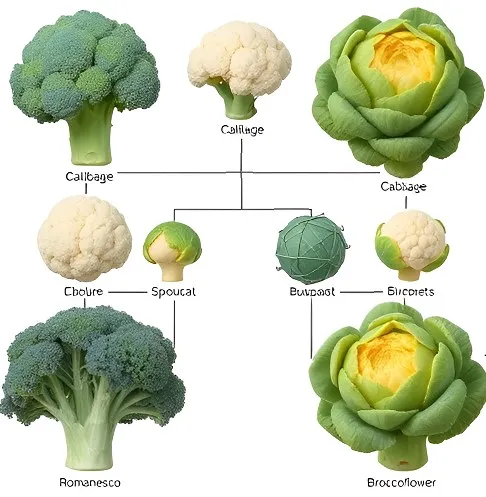
The Science Behind Hybrid Vegetables
Yes, you can cross broccoli and cauliflower, and the results are as fascinating as they are delicious. Both broccoli and cauliflower belong to the Brassica oleracea species, which makes them closely related and ideal for hybridization. Through careful breeding techniques, scientists and farmers have created hybrids that combine the best traits of both vegetables.
One popular hybrid is Romanesco, known for its stunning fractal-like appearance. It has a vibrant green color like broccoli but a slightly milder flavor and texture reminiscent of cauliflower. Another well-known cross is broccoflower, which resembles a green cauliflower but with a flavor that’s a mix of the two. These hybrids are excellent for salads and other dishes, offering unique flavors and visual appeal.
The process of crossing these vegetables involves selective pollination. Farmers pollinate one plant with the pollen from another to create a new variety that carries characteristics from both parents. This practice is common in agriculture to enhance flavor, texture, or nutritional content.
Practical Uses for Hybrid Varieties
Hybrids like Romanesco and broccoflower are perfect for creative recipes. Their unique appearance adds an eye-catching element to any dish, making them ideal for salads, roasted platters, or even soups. These vegetables also offer a nutritional boost, as they retain many of the health benefits of both broccoli and cauliflower.
For home gardeners, hybrids can be a fun challenge to grow. They’re hardy and thrive in similar conditions as their parent plants, requiring well-drained soil and plenty of sunlight. Plus, growing hybrids allows you to experiment with new flavors and textures straight from your garden!
Fun Fact: Broccoli and cauliflower are also part of the same family as cabbage, kale, and Brussels sprouts – so they’re like cousins on your dinner plate!
Hybrids bring exciting possibilities to your kitchen and garden, showcasing the best of broccoli and cauliflower in one vegetable.
Perfect Salad Recipe
Ingredients List
Creating a delicious broccoli and cauliflower salad starts with fresh, high-quality ingredients. Here’s what you’ll need:
Main Ingredients:
- 2 cups broccoli florets (chopped into bite-sized pieces)
- 2 cups cauliflower florets (chopped into bite-sized pieces)
- 1/2 cup shredded cheddar cheese (optional, for added creaminess)
- 1/2 cup cooked and crumbled bacon (optional, for a savory crunch)
- 1/3 cup sunflower seeds (or almonds, for extra crunch)
- 1/4 cup dried cranberries or raisins (for sweetness)
- 1/4 cup chopped red onion (finely diced for a sharp flavor)
For the Dressing:
- 1/2 cup mayonnaise (or Greek yogurt for a lighter option)
- 1 tablespoon apple cider vinegar (or white vinegar)
- 1 tablespoon honey or maple syrup (to balance the tanginess)
- Salt and pepper to taste
Step-by-Step Instructions
Follow these simple steps to prepare a salad that’s bursting with flavor and texture:
Step 1: Prepare the Vegetables
- Wash the broccoli and cauliflower thoroughly, then pat them dry to remove excess moisture.
- Chop both into small, bite-sized florets for easy eating.
Step 2: Make the Dressing
- In a small mixing bowl, whisk together the mayonnaise, apple cider vinegar, and honey.
- Add a pinch of salt and pepper, adjusting to taste. If you’re using Greek yogurt, mix in an extra teaspoon of honey for added sweetness.
Step 3: Combine Ingredients
- In a large mixing bowl, add the broccoli, cauliflower, red onion, sunflower seeds, dried cranberries, and any optional add-ins like bacon or cheese.
- Pour the dressing over the vegetables and toss until everything is evenly coated.
Step 4: Chill and Serve
- Cover the salad and refrigerate it for at least 30 minutes to allow the flavors to meld.
- Serve cold as a side dish or a light meal.
Pro Tips for Success
- Customize Your Add-Ins: Not a fan of cranberries? Swap them out for chopped apples or grapes for a fresh twist. Want more protein? Add grilled chicken or chickpeas.
- Lighten It Up: Replace half the mayonnaise with plain Greek yogurt for a tangy, healthier version.
- Make It Ahead: This salad tastes even better the next day as the flavors develop, so feel free to prepare it in advance for potlucks or meal prep.
Nutrition Information (Approximate per Serving):
- Calories: 200
- Protein: 5g
- Fat: 12g
- Carbohydrates: 10g
- Fiber: 3g
Pro Tip: Add a squeeze of lemon juice just before serving for a refreshing citrus boost!
This recipe is the perfect combination of crunchy, creamy, and sweet. It’s a crowd-pleaser for any occasion, from family dinners to outdoor picnics.
Dressings for Broccoli and Cauliflower Salad
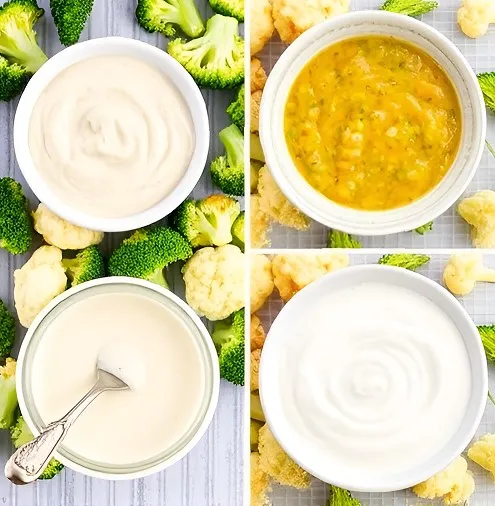
Classic Dressing Ideas
The dressing can make or break your broccoli and cauliflower salad, and classic options are always a hit. These tried-and-true recipes deliver the perfect balance of creaminess and tanginess:
- Creamy Mayo-Based Dressing
A mayo-based dressing is a staple for broccoli and cauliflower salads. It’s rich, smooth, and clings perfectly to the florets.- Ingredients: 1/2 cup mayonnaise, 1 tablespoon white vinegar, 1 tablespoon sugar, a pinch of salt, and black pepper.
- Whisk together all ingredients and adjust sweetness to taste. This dressing pairs wonderfully with crispy bacon or shredded cheddar.
- Simple Vinaigrette
If you’re looking for a lighter option, a tangy vinaigrette is a great choice.- Ingredients: 3 tablespoons olive oil, 1 tablespoon red wine vinegar, 1 teaspoon Dijon mustard, 1 teaspoon honey, salt, and pepper.
- Shake everything in a jar until emulsified. This dressing enhances the natural sweetness of the vegetables while keeping the salad light and refreshing.
- Yogurt-Based Dressing
For a healthier twist, opt for a yogurt-based dressing that delivers creaminess without the extra calories.- Ingredients: 1/2 cup plain Greek yogurt, 1 tablespoon lemon juice, 1 teaspoon honey, 1 clove minced garlic, salt, and pepper.
- This dressing is tangy and zesty, perfect for pairing with dried cranberries and nuts.
Healthy Dressing Alternatives
If you’re seeking even healthier options or catering to dietary restrictions, consider these alternatives:
- Avocado Dressing: Blend a ripe avocado with lime juice, olive oil, and a touch of garlic for a creamy, dairy-free dressing that’s packed with healthy fats.
- Tahini-Lemon Dressing: Combine 3 tablespoons of tahini with lemon juice, a splash of water, and a drizzle of honey. This nutty, tangy dressing works beautifully with roasted nuts or seeds.
- Pesto Vinaigrette: Mix 2 tablespoons of pesto with olive oil and a splash of white vinegar for a herby, aromatic dressing that elevates the entire salad.
Pro Tip: Always dress your salad just before serving to keep the vegetables crisp and the flavors fresh!
With these dressing options, you can customize your salad to suit any taste or occasion, ensuring it’s always a crowd-pleaser.
Adding Variations to Your Broccoli and Cauliflower Salad
Creative Add-Ins
Broccoli and cauliflower salads are incredibly versatile, making it easy to mix in additional ingredients to suit your taste. Here are some creative add-ins that can take your salad to the next level:
- Sweet Additions
- Dried fruits like cranberries, raisins, or chopped dates add a pop of sweetness that balances the earthy flavors of broccoli and cauliflower.
- Fresh fruits like chopped apples, grapes, or pomegranate seeds bring a juicy freshness to every bite.
- Savory Enhancements
- Crumbled bacon or diced ham adds a salty, savory crunch that pairs perfectly with creamy dressings.
- Shredded or cubed cheeses like cheddar, feta, or Parmesan boost the creaminess and add depth to the flavor.
- Crunchy Toppings
- Nuts and seeds like almonds, walnuts, pecans, sunflower seeds, or pumpkin seeds add a satisfying crunch and healthy fats.
- Croutons or crispy fried onions can give your salad a heartier, more indulgent twist.
- Protein Boosters
- Grilled chicken, turkey, or shrimp make the salad a complete meal, perfect for lunch or dinner.
- Plant-based options like chickpeas, edamame, or tofu are great for vegetarians.
Seasonal Adaptations
Keep your salad exciting year-round by incorporating seasonal ingredients:
- Fall and Winter
- Add roasted sweet potatoes, butternut squash, or cranberries for a warm and hearty flavor.
- Include spiced nuts like candied pecans for a festive twist.
- Spring and Summer
- Fresh peas, asparagus tips, or radishes add vibrant, crisp flavors for warmer months.
- Toss in seasonal berries like strawberries or blueberries for a burst of sweetness.
Customizing for Dietary Preferences
Whether you’re catering to specific diets or just experimenting, is easy to adapt:
- Keto-Friendly: Use a high-fat, low-carb dressing like ranch or avocado and add ingredients like bacon, cheese, and nuts.
- Vegan: Swap mayonnaise for vegan mayo or tahini and add chickpeas or seeds for protein.
- Low-Calorie: Opt for a yogurt-based dressing and focus on fresh veggies and fruits for a lighter option.
Pro Tip: Don’t be afraid to experiment! Try adding herbs like parsley, cilantro, or dill for extra flavor and a touch of greenery.
With these variations, your salad can be endlessly customized to fit the season, occasion, or dietary needs, ensuring it’s always a hit.
Storing and Serving Your Salad
How to Store Leftovers Without Losing Texture
Proper storage is key to keeping your broccoli and cauliflower salad fresh and crisp, especially if you plan to enjoy it over several days. These tips will ensure your salad stays just as tasty as the day you made it:
- Store Dressing and Salad Separately:
If possible, keep the dressing in a separate container and toss it with the salad only when you’re ready to eat. This prevents the vegetables from becoming soggy. - Use Airtight Containers:
Transfer your salad to an airtight container to lock in freshness. For best results, use shallow containers to avoid crushing the vegetables. - Add a Paper Towel:
Place a dry paper towel at the bottom of the container or over the top of the salad before sealing it. This absorbs excess moisture and prevents the salad from becoming watery. - Refrigeration Guidelines:
Store your salad in the refrigerator at 35–40°F (1.5–4°C). Properly stored, it will stay fresh for up to 3 days.
Serving Suggestions for Different Occasions
salad is versatile enough to serve for a variety of occasions. Here’s how to present it perfectly:
- Casual Meals:
Serve the salad in a large bowl as a side dish for family dinners. Pair it with grilled chicken, fish, or your favorite casserole for a balanced meal. - Potlucks and Parties:
For gatherings, layer the salad in a glass trifle bowl to showcase its colorful ingredients. Garnish the top with a sprinkle of nuts or a drizzle of dressing to make it eye-catching. - Meal Prep:
Portion the salad into individual containers for quick grab-and-go lunches during the week. Keep the dressing in a small container to add just before eating.
Pro Tip: Sprinkle freshly toasted nuts or seeds over the salad just before serving for an added crunch that doesn’t get soggy in storage.

